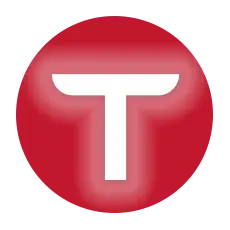Tesla/SpaceX CEO Elon Musk along with T-Mobile CEO Mike Sievert gave a joint presentation on how both of these companies aim to collaborate on using Starlink satellites to expand cellular coverage in areas currently marked as dead zones.
Mike and Musk addressed a select audience of SpaceX/T-Mobile employees and some journalists from online publications on Thursday, August 25th at Starbase Boca Chica, Texas.
Even in an era where we’re close to completing the 1st quarter of the 21st century, 20% of the United States and 90% of the Earth’s area is not covered by wireless cellular services. This is the gap that SpaceX and T-Mobile are willing to fill up in the coming years with better Starlink satellite coverage.
T-Mobile and SpaceX are working together to start the Starlink-enabled cellular coverage in remotest areas of the United States and its territorial waters by the end of next year (2023).
Even after the presentation (video below), Elon Musk posted a few tweets about this upcoming Starlink. One of his tweet replies was particularly interesting because it involved the use of this service in Tesla vehicles.
“Will Tesla cars get this feature too in the future to connect directly to Starlink satellites for emergency calls/texts?” asked Dave Lee (TSLA retail investor) — “Yes,” replied Elon Musk.
Because every Tesla vehicle is already equipped with a cellular chip for navigation and connectivity to the Tesla Mothership, it will be easy to have them connected to this new service.
Both Mike Sievert and Elon Musk iterated multiple times that existing phones and software will be able to connect to this service — no special upgrades are required at the customer’s end. So Tesla vehicles will automatically be able to connect to Starlink+T-Mobile remote connectivity.
In the near future, Tesla owners will not fear taking trips to remote areas as they will always be able to have a communication link back to their loved ones and Tesla, Inc. itself. FCC has already approved the use of Starlink satellite internet on moving vehicles last month. So, cellular service on moving Teslas will surely be not an issue.
The thing that I think is really profound about what we’re announcing today is that it will save lives
Elon Musk
With the integration of T-Mobile’s cellular service with the Starlink satellite constellation, existing phone users will be able to use voice and text (SMS) in the remotest of locations in the United States (1st phase) and later on internationally.
The peace of mind to be able to call for help will save the lives of travelers and native people living in places not yet covered by wireless services.
Starlink Gen 2 Satellites
The main ingredient in this T-Mobile and SpaceX collaboration is the development of the 2nd-generation Starlink satellites. Second, is the synchronization of T-Mobile’s PCS spectrum with this new breed of Starlink satellites. It requires changes in both hardware and software, Musk said.
The major change in the Starlink Gen 2 satellites from its current predecessor is the addition of very big antennas. Elon Musk said that these antennas are not just quite big in size but are also extremely advanced from a technology perspective. “They are the most advanced phased-array antennas in the world,” he stated.
To reach a Starlink satellite that’s revolving at 17,000 mph around the Earth, a cell phone signal has to travel 500 miles (low Earth orbit). At this speed, the satellite has to compensate for the Doppler effect of moving so fast.
Further explaining how Gen 2 Starlink satellites will work with a cellular network, Musk said that it’s quite a difficult technical challenge. “It’s a hard problem, that’s why it’s not been solved before,” he added.
However, SpaceX is testing this next-generation of Starlink satellites in its lab and Elon Musk feels confident that they will work well in the field as well.
In a nutshell, no more dead zones
Elon Musk
How big actually the Starlink V2 antenna is?
Answering a journalist from Arstechnica, Elon Musk answered this question thoroughly. Starlink V2 satellite cell spectrum antenna is 5 to 6 meters long on a side, so it’s roughly 25 square meters in total.
Since this adds to the already huge size of a Starlink Gen 2 (V2) satellite itself, these will not be able to be sent to LEO on a Falcon 9 rocket payload fairing. “Starlink V2 satellites are meant for Starship,” Musk said.
However, SpaceX has an interim plan if the Starship program gets delayed for unexpected reasons like it did in the past. SpaceX will be using Starlink V2 Mini satellites which will be launched into space using Falcon 9 rockets.
Starlink V2 will be like a cellular tower in the sky
Mike Sievert
Key Takeaways
- Starlink-integrated T-Mobile service (beta) will be launched in late 2023.
- In the 1st phase, voice calls, SMS, and partnering messaging apps will be enabled with this service.
- Existing phones without any software or hardware updates will be able to connect to this service (they are already familiar with this spectrum).
- In addition to the United States territorial waters, this service will also cover a vast majority of international seas.
- SpaceX and T-Mobile welcome partners around the globe for reciprocal roaming to enable cross-border usage of this service.
- The cellular bandwidth in remote locations will be 2 to 4 megabits per cell zone (enough for thousands of voice calls and millions of text messages).
Stay tuned for future updates on Starship and SpaceX, Follow us on:
Google News | X (Twitter) | Flipboard | WhatsApp Channel | RSS (Feedly).


